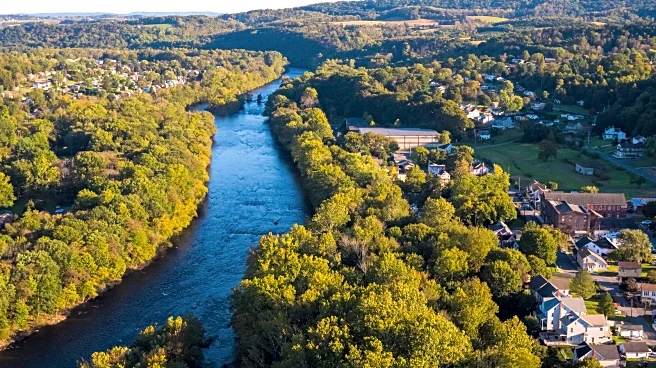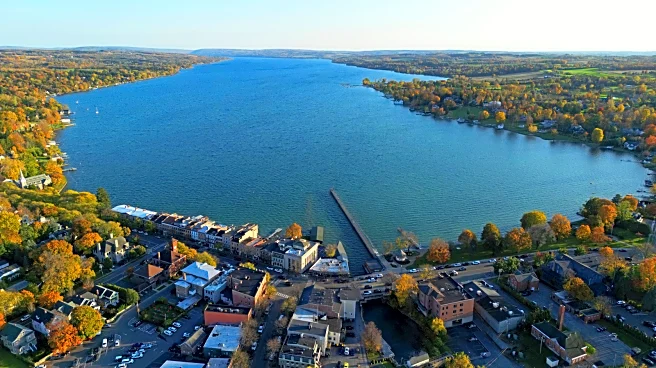
Just over the Hudson River, the energy and culture of New York City persists into the less touristy, more down-to-earth urban suburbs of northern New Jersey. They often come with the kind of views of the Manhattan skyline that you can't get when you're in the thick of it: Some of the best skyline strolls are at the walkable hilltop in Union City lined with cafés. Meanwhile, Tenafly is one of New Jersey's richest suburbs and a creative hideaway. But for something less buttoned-up, without venturing
too far out from Manhattan, take the Port Authority Trans-Hudson (PATH) train across the river and over to Hoboken.
Funnily enough, Hoboken is the true wellspring of some of the cherished hallmarks most associated with New York City. It was the birthplace and childhood home of "New York, New York" singer Frank Sinatra, it's where the first baseball game was officially played in 1846 (commemorated by a plaque at the intersection of Washington Street and 11th Street), and the country's first brewery opened here in 1663. Hoboken's roughly one-square-mile area packs a ton of historical sites, plus some lovely parks and eats, all bordered by a pier-studded waterfront promenade backdropped by perfect views of the Manhattan skyline.
Read more: The Most Charming Cobblestone Streets In America That Will Take You Back In Time
Hoboken's Grand Terminal And Waterfront Walkway

Most visitors arrive in Hoboken at the Hoboken Lackawanna Terminal, a gorgeous, copper-covered train station from 1907 that's one of the last of its kind along the Hudson River still in use. From Manhattan's Penn Station, it's only about 20 minutes by way of the PATH train to get to the Hoboken terminal, or about 45 minutes by train coming from Newark Liberty International Airport. The Hoboken Lackawanna Terminal memorializes rail travel's golden age, and it's surprisingly luxurious if you take a moment to see its grand waiting hall, which is strung with chandeliers and has a Tiffany stained-glass skylight. Hoboken's role in train history is a major one, too — it's where the first locomotive, running on a circular track next to the Hudson River, was built in 1825 by John Stevens. The Stevens Institute of Technology (named after the inventor's family) now stands where the track once was.
It's worth taking the 10-minute walk from the Hoboken Lackawanna Terminal up to the institute's campus, which goes along the beautiful Hoboken Waterfront Walkway on the Hudson River. You'll pass Pier A Park, where you can sit on the lawn facing the skyline or go fishing. A little further up the waterfront is Pier C Park, set on an artificial island, much like the free-to-visit floating Little Island park in Manhattan. At the Stevens Institute of Technology campus, climb up to Castle Point Lookout, Hoboken's highest point and open to the public all day. Surprisingly, one of the lookout's signature features is a cannon, alleged to date back to the American Revolution.
Fascinating Stops And Iconic Eats In Hoboken
Just next to the Castle Point Lookout is one of Hoboken's most fascinating oddities: Sybil's Cave. It's considered the oldest human-made site in Hoboken, constructed by the Stevens family in 1832 as a romantic grotto around a natural spring. Though it became sealed by building debris for decades, it was uncovered and reopened to the public in 2007. It also has a grim historical element: It's where the body of a murdered girl, Mary Rogers, washed ashore in 1841. The murder case served as the basis for Edgar Allen Poe's story "The Mystery of Marie Rogêt."
Walk about 12 minutes up the waterfront from Sybil's Cave and you'll reach the Hoboken History Museum, located in a former machine shop. It has rotating exhibits about Hoboken's history, plus the upper floor features local artists. The museum has a low admission price and is open Tuesday through Sunday with varying hours. Next to the museum, Shipyard Park is a pretty lawn space that hosts free concerts throughout the summer.
Many of Hoboken's best boutiques, cafés, and restaurants are found along the Victorian storefront-lined Washington Street, which runs basically the extent of the city. The southern part of the street is a preserved historic district adorned with 1800s-style lampposts, where you can find Carlo's Bakery, the one featured in the TV show "Cake Boss." Another staple of Washington Street is La Isla, a long-standing Cuban restaurant, whose chef Omar Giner won on an episode of the Food Network's "Beat Bobby Flay" with his stuffed French toast.
Ready to discover more hidden gems and expert travel tips? Subscribe to our free newsletter for access to the world's best-kept travel secrets.
Read the original article on Islands.










